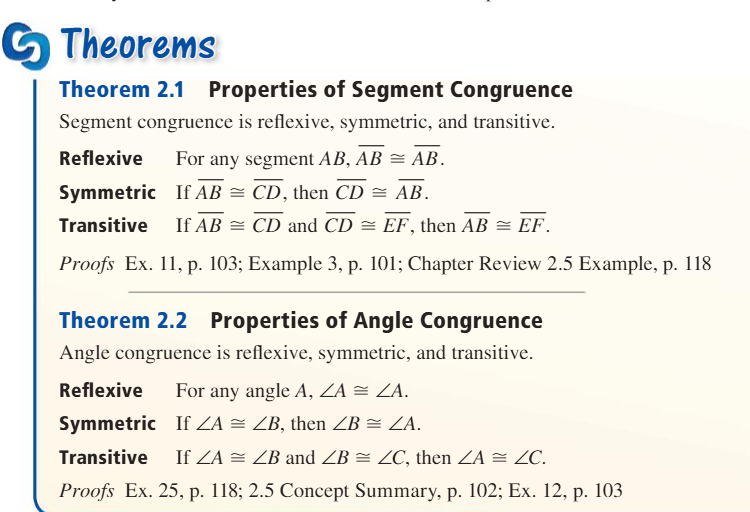Lesson 2.5 | Proving Statements about Segments and Angles (PROOFS)
Two Column Proofs
A two-column proof is a method used to show the validity of a statement or theorem through organized reasoning, where a justification accompanies each statement.
The left column lists the statements or assertions, while the right column provides the reasons or properties that support those statements.
Think about it, writing it like what you did, and why.
STEPS | EXPLANATION |
I brushed my teeth. | I did this so my breath didn’t stink. |
I showered | I did this so I didn’t stink |
I put new clothes on | So that I don’t smell like dirty clothes |
Properties of Congruence
Theorem
A theorem is a statement that has been proven to be true based on previously established statements or axioms. Basically something that can be proven true.
Properties of Segment Congruence
Reflexive Property: For any segment AB, ( AB \cong AB ). This property states that each segment is congruent to itself.
Symmetric Property: If segment AB is congruent to segment CD, then segment CD is congruent to segment AB. This shows that the relationship of congruence is mutual.
Transitive Property: If segment AB is congruent to segment CD and segment CD is congruent to segment EF, then segment AB is congruent to segment EF. This property illustrates the chaining of congruence relations.
Properties of Angle Congruence
Reflexive Property: Similar to segments, each angle is congruent to itself.
Symmetric Property: If angle A is congruent to angle B, then angle B is congruent to angle A, confirming the mutual nature of angle congruence.
Transitive Property: If angle A is congruent to angle B and angle B is congruent to angle C, then angle A is congruent to angle C, demonstrating the chaining property for angles.
